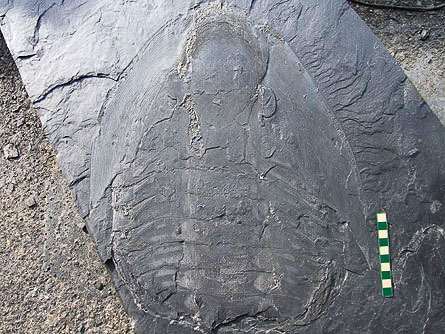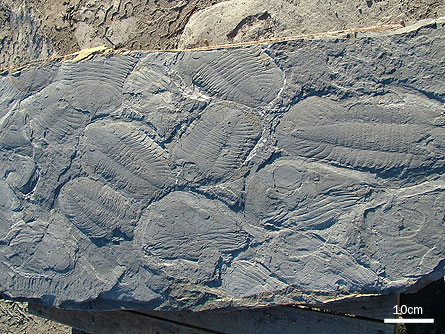Fossils unearthed at a slate quarry in northern Portugal include those of the largest known trilobites, as well as immense assemblages — some a thousand strong — that suggest the creatures exhibited social behavior.


Trilobites, an extremely successful but now long-extinct group of arthropods, strolled ancient seafloors for millions of years. The new fossils come from rocks laid down as seafloor sediments about 465 million years ago, says Artur Sá, a paleontologist at the University of Trás-os-Montes and Alto Douro in Vila Real, Portugal. He and his colleagues describe the fossils in the May Geology.
Several groups of fossils contain hundreds of molted exoskeletons, and others include large numbers of creatures all of the same size — a hint that the trilobites gathered in groups during some stages of their life cycles, possibly molting or mating, Sá says.
However, the team’s big find — literally — is a partially curled trilobite that, when stretched out during life, probably measured about 86.5 centimeters long. Although trilobite species came in many sizes, complete fossils of individuals more than 30 centimeters long are rare, Sá notes.
The Portuguese site “is an astounding place,” says Richard Fortey, a paleontologist at the Natural History Museum in London. “In some parts of the quarry, every damn specimen is colossal.”






